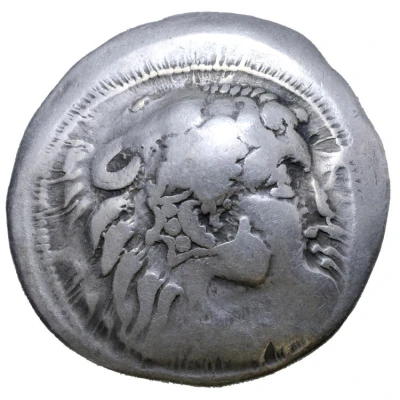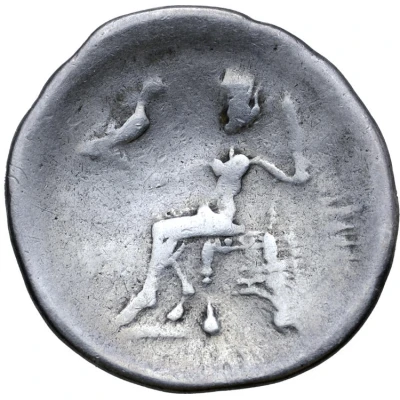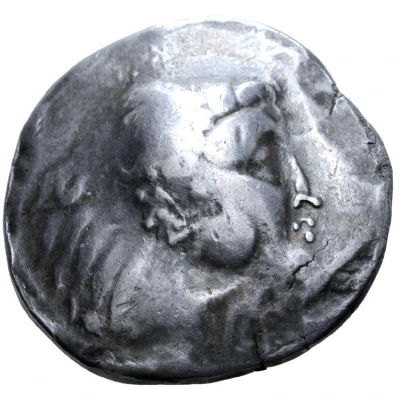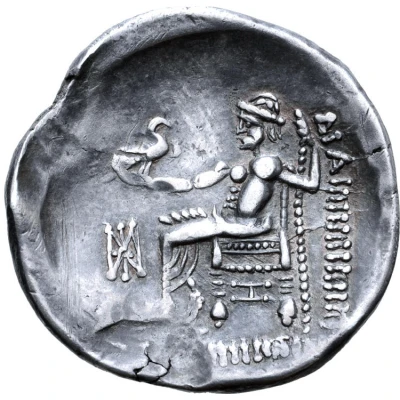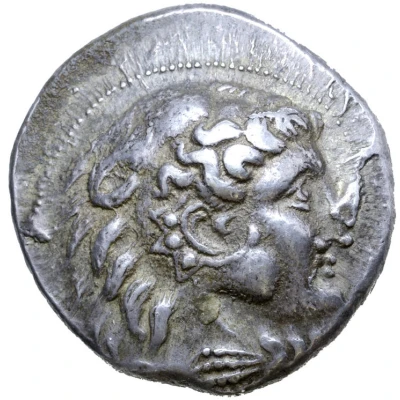
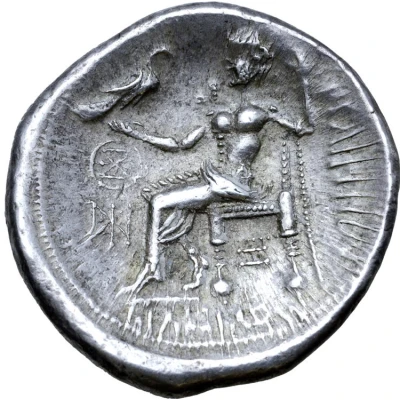

© Roma Numismatics Limited
Tetradrachm Philip III Type 300 BC - 201 BC
| Silver | 16.74 g | 28 mm |
| Issuer | Uncertain Eastern European Celts (Uncertain Central and Eastern European Celts) |
|---|---|
| Type | Standard circulation coin |
| Years | 300 BC - 201 BC |
| Value | Tetradrachm (4) |
| Currency | Drachm |
| Composition | Silver |
| Weight | 16.74 g |
| Diameter | 28 mm |
| Shape | Round (irregular) |
| Technique | Hammered |
| Orientation | Variable alignment ↺ |
| Demonetized | Yes |
| Updated | 2024-10-09 |
| Numista | N#191720 |
|---|---|
| Rarity index | 100% |
Reverse
Zeus Aëtophoros seated to left, holding sceptre; blundered legend to right and below, monograms to left and letter under throne.
Comment
Examples of this type:• Example #1 (16.74g, 28mm, 12h; Extremely Fine):
© Image courtesy of Roma Numismatics Limited
◦ Ex-Hermann Lanz Collection; published in Michaela Kostial - "Kelten im Osten. Gold und Silber der Kelten in Mittel und Osteuropa, Sammlung Lanz", München, 1997, #904;
◦ Auctioned by Roma Numismatics Ltd, Auction XVIII, 29 September 2019, lot 226. Sold for 200 GBP.
• Example #2 (16.74g, 28mm, 12h; Extremely Fine):
© Image courtesy of Roma Numismatics Limited
◦ Ex-Hermann Lanz Collection; published in Michaela Kostial - "Kelten im Osten. Gold und Silber der Kelten in Mittel und Osteuropa, Sammlung Lanz", München, 1997, #905;
◦ Auctioned by Roma Numismatics Ltd, Auction XVII, 28 March 2019, lot 242. Sold for 170 GBP.
Interesting fact
The Tetradrachm coin was used by the ancient Celts in Eastern Europe during the 3rd century BC. It's interesting to note that the Celtic culture was known for its advanced metalworking techniques, and the production of coins like the Tetradrachm was a significant achievement for their time. The coin's design features a stylized head of a Celtic deity on one side and an animal on the other, showcasing the Celts' skill in crafting intricate designs and their deep connection to their spiritual beliefs.
